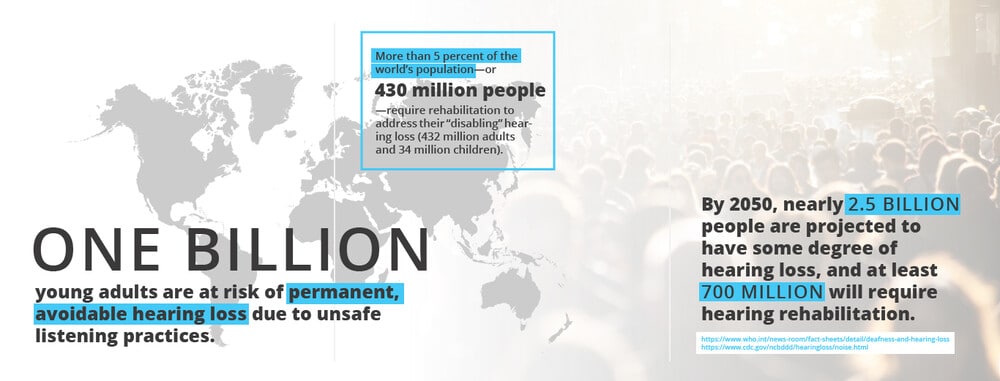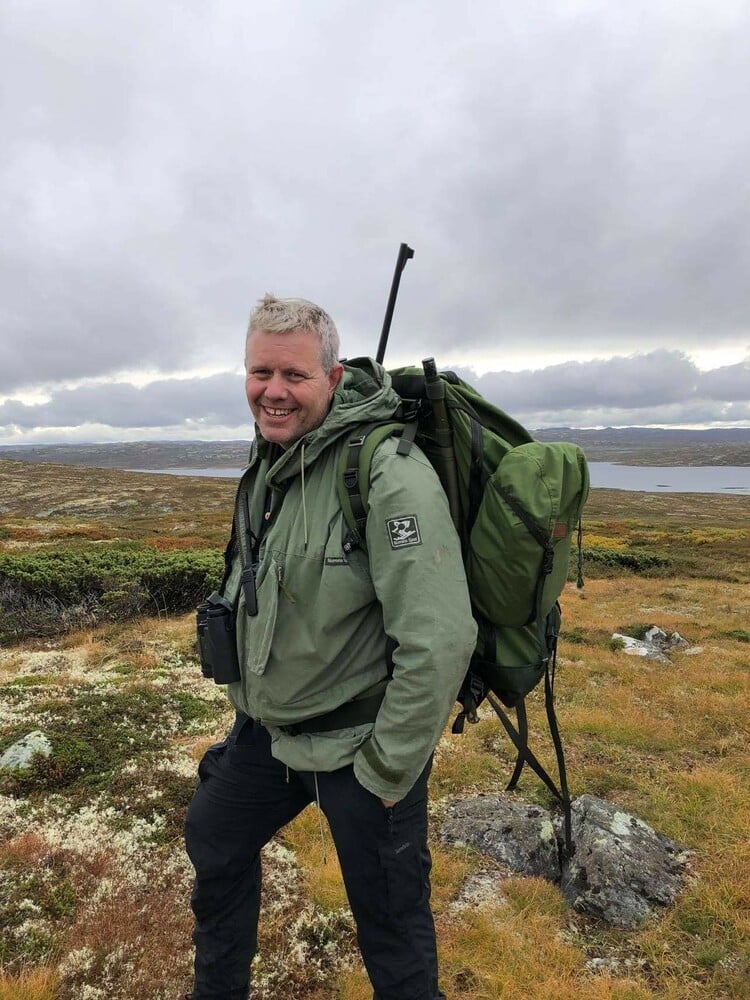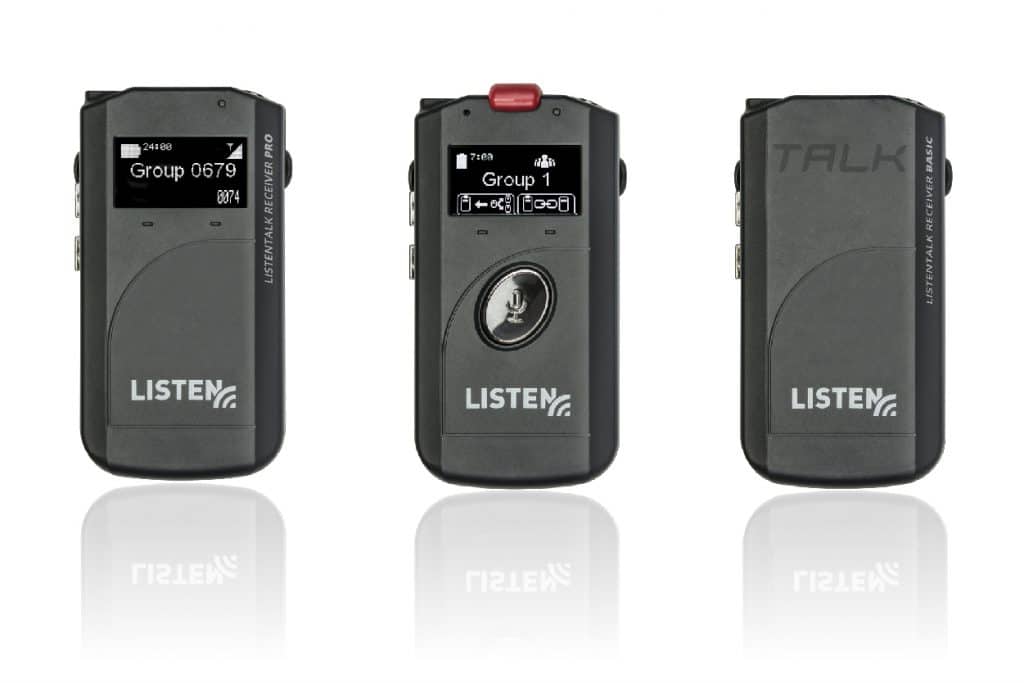- Loading…
Post 1 of 3
Listen Technologies recently caught up with channel partner Halvard Eriksen, a long-time AV integrator and sound engineer. In a series of blog posts, Halvard shares his own experience with hearing loss, hearing aids, and assistive listening systems. In this first post, he talks about the cumulative effect of noise on his hearing.
This spring, I received a phone call from the local medical center’s hearing department. They were calling to set up an appointment to personalize the settings in my new (and first pair) of hearing aids. They politely inquired if I was ready and willing to start using my new hearing aids, and I passionately responded, “Yes! I am more than ready.”
Over the last ten years, I have had my hearing tested regularly. I have damaged hearing with a distinct dip in the 3-5 kHz frequency, speech frequency. I often have problems hearing what is said. I also experience Tinnitus frequencies in the spectrum between 8 and 10 kHz. The ringing is increasing, and if you have Tinnitus, you know just how annoying it is.

Damaging My Hearing Over the Years
I am an educated electrician, and I have had many part-time and full-time sound engineering jobs since age 16, including when I was 18 and started a PA rental company with a friend and my girlfriend at the time. I worked full time in the industrial plants in Odda, Norway as an electrician and ran the PA rental company in the evenings and on weekends. Later, I worked professionally as a sound engineer and, at one point, was the managing director for a professional PA rental company. I am the head of one of two installation departments for B Mikklesen AS. We mainly do IT infrastructure and AV systems, among other things, and deliver turn-key integrated installations in various markets.
In my job as an electrician, there was a high focus on hearing protection, but it was not well enforced. As a young and inexperienced apprentice, I often spent a whole day with a percussion drill and 50mm crown drill without hearing protection. I would hear “ringing” in my ears long after the workday had ended.

I have often experienced the same ringing after a wonderful day in the mountains with beautiful weather, lots of grouse in the terrain, and no hearing protection. In my free time, I hunt small game with shotguns and reindeer with hunting rifles. The cartridge belt around my waist becomes empty, and my backpack gets heavier and heavier with wild game. The ears hiss and ring, “but the experience makes it worth it!” Or does it?
I am old enough that I remember when the portable cassette player, the Walkman, first came to market. We were certainly not concerned about safe listening levels back then. When we cranked up the volume, we were not thinking about how it might harm our hearing. Gradually, better and better headsets and systems appeared that play right into the ear canal to reproduce the sound image and thus enhance the sound experience. We never thought about the fact that the ears are not made for it. Today, smartphone users can change the maximum headphone volume for music and videos in their device’s settings to protect their hearing.
I am a bassist and vocalist in various bands. If you’ve ever played in a band or been to a gig or rehearsal when everything gets too loud and you do not hear anything, you know it can be easy to get carried away by the atmosphere and groove. The volume goes up, and the mind goes out!
Once, I introduced myself to an American blues artist as his gig’s front-of-house engineer, and his response was, “Ahhh! So YOU are my sound victim!” Because that’s exactly what you get in smaller places where you want to make everyone happy. Sound technicians often run into musicians demanding high sound pressure level (SPL) on stage, organizers that do not understand that all clubs cannot host all artists, gigs in places with terrible acoustics, limited budgets for the stage production, and the lack of access to the right tool for the job. These challenges, along with others, often make it almost impossible to mix the gig on healthy listening levels. I have been in that situation so many times!
I still take some jobs as a sound technician but am very particular and only accept jobs that do not involve high sound pressures and too high a load on what I have left of my hearing.

We would love to deliver valuable insights right to your inbox once a month.

We would love to answer your questions, provide you with a detailed quote, or send you more information.
14912 Heritage Crest Way
Bluffdale, Utah
84065-4818 USA
Phone: +1.801.233.8992
Toll-Free: 1.800.330.0891
Office Hours
8:00 am – 5:00 pm MT
Monday – Friday
First, select the calculator type, USA (for Americans with Disabilities Act - ADA), California (for California Building Code), or Australia (for Australia's Disability Discrimination Act 1992). Enter the seating capacity and the number of minimum assistive listening devices required and the minimum number of neck loops will automatically populate based on the calculator type selected.